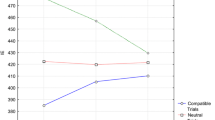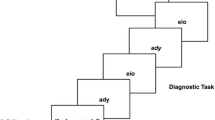Abstract.
The Simon effect refers to the finding of faster responses when stimulus and response locations correspond than when they do not, although a nonspatial stimulus feature is task-relevant. These performance differences are usually accounted for by response priming processes directly induced by the task-irrelevant stimulus location. The present study investigated neural mechanisms of response priming in a Simon task at the level of the motor cortex with the help of transcranial magnetic stimulation (TMS) and motor evoked potentials (MEPs) in both arms. A single TMS was applied contralateral or ipsilateral to the requested response at the time point where response priming was at a maximum. The MEP effects depended on the stimulated hemisphere. Over the left hemisphere, MEP areas were larger when TMS was applied over the primed motor cortex. However, reduced MEPs for the nonprimed hemisphere fell short of significance. Over the right hemisphere, only a MEP reduction for nonprimed left-hand responses was present. Therefore, we conclude that mainly excitatory activation underlies response priming in a Simon task, whereas the role of inhibitory processes is tentative.
Similar content being viewed by others
Author information
Authors and Affiliations
Additional information
Electronic Publication
Rights and permissions
About this article
Cite this article
Stürmer, B., Siggelkow, S., Dengler, R. et al. Response priming in the Simon paradigm. Exp Brain Res 135, 353–359 (2000). https://doi.org/10.1007/s002210000529
Received:
Accepted:
Issue Date:
DOI: https://doi.org/10.1007/s002210000529




